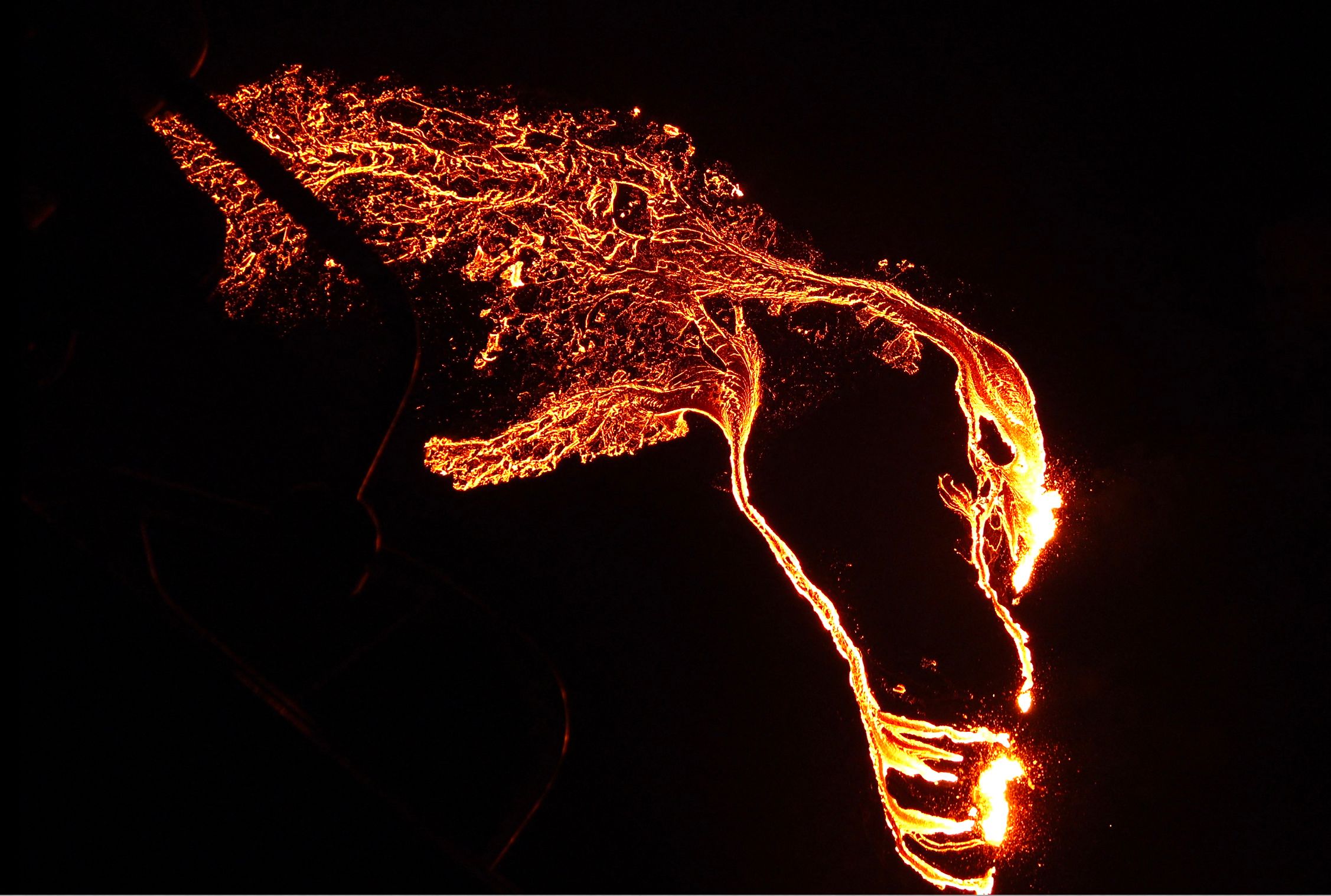Sky glows red as Icelandic volcano erupts after sitting dormant for 6,000 years
Mountain spews lava after more than 40,000 earthquakes in past month

A volcano has erupted near Iceland's capital Reykjavik, shooting lava high into the night sky after thousands of small earthquakes in recent weeks.
The eruption occurred at Fagradalsfjall, a mountain on the Reykjanes Peninsula, around 19 miles (30km) southwest of the capital on Friday.
The volcano had previously sat dormant for 6,000 years and the peninsula had not seen an eruption of any volcano for 781 years.
Some four hours after the initial eruption at 8.45pm GMT, lava covered about one square kilometer or nearly 200 football fields.
"I can see the glowing red sky from my window," said Rannveig Gudmundsdottir, resident in the town of Grindavik, only five miles (8km) from the eruption.
"Everyone here is getting into their cars to drive up there," she said.
Read more:
More than 40,000 earthquakes have occurred on the peninsula in the past four weeks, a huge jump from the 1,000 to 3,000 earthquakes registered each year since 2014.
The eruption posed no immediate danger to people in Grindavik or to critical infrastructure, according to the Icelandic Meteorological Office (IMO), which classified the eruption as small.
A fissure 500 to 750 metres long opened at the eruption site, spewing lava fountains up to 100m high, Bjarki Friis of the meteorological office said.
Residents in the town of Thorlakshofn, east of the eruption site, were told to stay indoors to avoid exposure to volcanic gases, Iceland's Department of Civil Protection and Emergency Management said. The wind was blowing from the west.
Unlike the eruption in 2010 of the Eyjafjallajökull volcano, which halted approximately 900,000 flights and forced hundreds of Icelanders from their homes, this eruption is not expected to spew much ash or smoke into the atmosphere.
Located between the Eurasian and the North American tectonic plates, among the largest on the planet, Iceland is a seismic and volcanic hot spot as the two plates move in opposite directions.
The source of the eruption is a large body of molten rock, known as magma, which has pushed its way to the surface over the past weeks, instigating the earthquakes.
The number of quakes had slowed down in recent days, however, leading geologists to say that an eruption would be less likely.
Reykjavik's international Keflavik airport was not closed following the eruption, but each airline had to decide if it wanted to fly or not, IMO said.
Arrivals and departures on the airport's website showed no disruptions.
Additional reporting by Jacob Gronholt-Pedersen and AP
Subscribe to Independent Premium to bookmark this article
Want to bookmark your favourite articles and stories to read or reference later? Start your Independent Premium subscription today.

Join our commenting forum
Join thought-provoking conversations, follow other Independent readers and see their replies